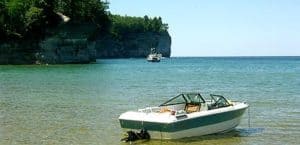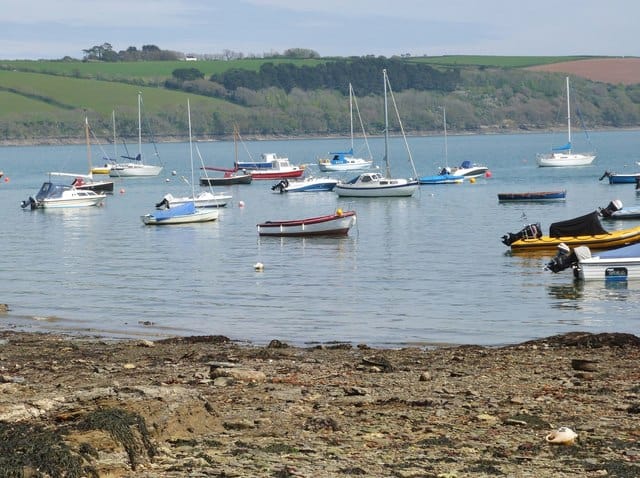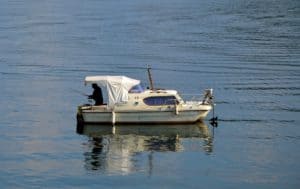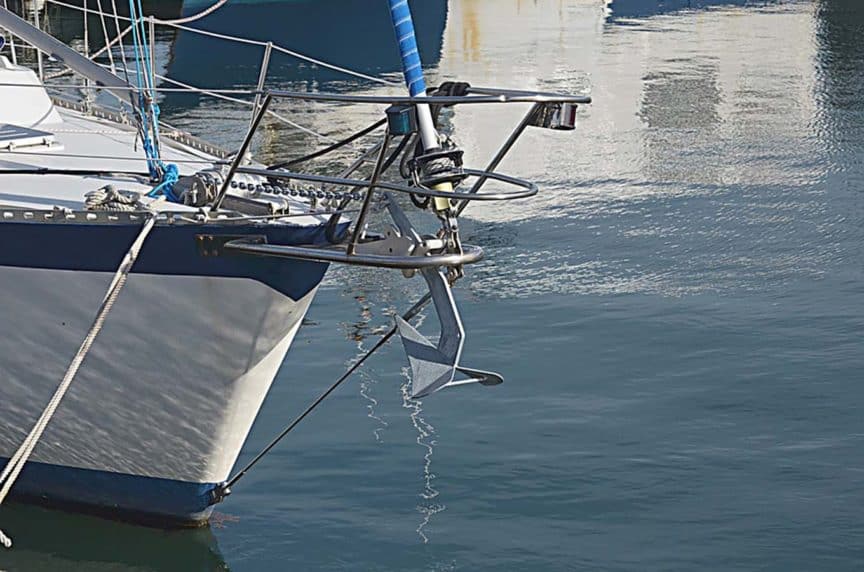When you have your boat to get you from Point A to Point B, when it is traveling on lakes, it makes perfect sense to make sure that you know how to anchor a boat properly.
Contrary to what you understand about water but water is always moving.
This means that if your boat is not properly anchored in the right place, you will find yourself and your boat swayed away on an unknown location that you are unsure how you got there.
This way, you don’t have to worry about wasting gas to get to one location on time when you are stranded in the middle of nowhere. To be honest, that’s no way to navigate a boat.
Alright, without further ado, let’s get down to brass tax.
How To Anchor A Boat Properly?
Do You Have The Right Tools?
Before you can learn how to anchor your boat the right way so you do not have to worry about your boat swaying the ocean in the middle of the night, one thing that you want to make sure is that your boat has the right tools to anchor itself properly.
Select The Appropriate Anchor

How To Anchor A Boat
If you don’t have the correct anchor everything will be difficult. So, at first, we must select the anchor according to our area, local conditions, and the size and weight of our boat.
One option that you can do if you are looking to start from the very beginning is to get yourself a general-purpose fluke anchor.
This could help out in the meantime as a decent anchor solution for the time being.
Other factors that we should research are the wind and current of the water where we are going to be sailing into.
It’s important that you understand the effectiveness of each anchor in its own setting. For example, Bruce or Claw anchors are highly effective and one of the most popular for almost any type of bottom. It performs well in all conditions and really easy to set.
Plow or Delta anchors are also good for different conditions and different bottoms. Many boaters use plow type anchors for holding their watercraft.
We can use Mushroom anchors for small boats in a lake or even in a river where there is no strong current.
Ultimately, it all depends on the size of your boat and the terrain that your boat is going to find. They are great to use for small watercraft but if you have a large boat, then you should look for something better and stronger.
Grapnel anchors are mostly used in rivers for small vessels. But it works better hooked to something like rocks or anything else.
Knowing the terrain and the size of your boat (and even the material of your boat will help you more than anything when it comes to figuring what you need to do with your boat.
One thing that we need to point out noticeably is that you can’t be cheap when you are buying the anchor.
The bigger is always better in the world of anchors. Buy the best anchor that your money can buy.
This is about your safety and you need to take that into consideration when you have your boat.
Get The Best Anchor Rode
You never know about the quality of your anchor rode until something bad happens … like being swayed out into the wide-open ocean or lake without having the plan necessary to get yourself back to the shore.
You need to check your anchor rode and make sure that it’s not stuck or that it comes out of the ship in place. That way, you can be sure that your anchor rode works.
If you find that your anchor rode is rusty or that is jammed, you are aware of this beforehand and what you need to do now is to take the necessary steps to fix the anchor rode before you start sailing out into the great, wide-open ocean or lake.
Knowing which material you want your anchor rode to be is important. Different materials have their advantages and disadvantages. To reduce the direct impact on the anchor we should use a trace of a chain.
For example, using nylon as an elastic anchor rode allows it to be responsive to the sudden wind and current change.
Nevertheless, you need a strong rope that you can use as a rode to hold your boat in place.
Using braided nylon rope is a strong option for you to use and to work with. The downside is that you can’t use it for frequent use.
Definitely know how frequently that you are planning to sail and adjust your anchors and your anchor rodes for that, respectively.
When in doubt, consider using the anchor chain. It’s strong and if you are a frequent sailor, it must be the best option for you. Always upgrade your anchor rode if necessary.
Drop And Set The Anchor
With the basics already stated around what tools you would need, you just need to know how to anchor your boat properly in most general situations. If you are in rough water for circumstances, you may have to drop the anchor like an expert.
Before driving a boat in rough water, we must know some techniques.
Don’t forget to select a suitable and permitted area for anchoring. We also must know where it is prohibited to anchor.
One: Keep the anchor chain and the anchor rope ready and cleanly coiled. Make sure that your anchor rode is secure and tied to your boat.
Two: Now what we should observe the place of anchoring assuring that it’s free from traffic and other environmental hazards. Select a big space so that we can drift 360 degrees if needed with a radius of 10 times of the depth of the water.
Three: let’s calculate the anchor rode to be lowered with the anchor depending on the distance between the depth of the water and the boat height up to the bow. The measurement should be 7 times of that mentioned distance for normal conditions. And it can 5 times for lighter conditions and should be 10 times if the condition is windy. Again we should tie the measured rope to a cleat on the bow.
Four: Communicate with the others on board that you are going to anchor the boat. Maintain the minimum boat speed and stop the boat where you want to drop the anchor. Now start lowering the anchor slowly and smoothly until it touches the bottom. No, you cannot throw your anchor overboard without a care in the world. Also, one important note is that you are never to drop your anchor from the stern. The only exception is that you already have another anchor that has already descended into the ocean.
Five: Now we should drive the boat back smoothly and slowly up to 7 times the distance between the attachment bow point and the bottom. Make sure that the rope is correctly attached to your bow cleat.
Six: Use a very short reversed power to set the anchor properly. And that’s it. We can turn the engine off.
How To Anchor a Boat on the Beach?

Anchoring On The Beach
Now, that you have your boat ready, the question that you have to ask yourself is, “What type of person would sailing their boat and have it positioned near the beach?”
If you are one of those people then you should continue to read this section. This section is here to help you learn how to properly position your boat so that you can have your boat docked at a beach.
There is a fair warning. Sand (especially at a beach) is abrasive.
It scratches the gel coat. Worse yet, it can have water intruding into the fiberglass laminate. It can also remove antifouling coatings if your boat had recently got a painting job.
Another thing that you need to know when you are beaching your boat is that in tidal water, you are going to have to move your boat every hour or so. Otherwise, you run the risk of having your boat float away.
Everyone does it all the time and understandably, you don’t want to be left out.
That’s human and understandable. however, you should have a better idea of what you are getting yourself and your boat into.
However, if you still have that inexplicable urge to anchor your boat at a beach, there is a suggestion.
You can get your boat fitted with Keelguards to protect your boat.
The first thing that you need to move your boat to the shallowest water that you can get close to. It needs to be able to float and you still need to be able to operate your boat there.
The second thing that you need to do is that you need to get out of your boat and plant the anchor.
The third thing that you need to do is that you need to take a second anchor through the stern and have it secured in a way that prevents the boat from floating sideways from the beach.
Remember, if you have about one hour so you always need to know the proper steps for when you have to place your boat when you have to eventually leave.
To do that, you have to remove the bow anchor. You have to untie the stern anchor and bring the line to the helm or the bow.
This makes sure that you can back out your boat in a way that doesn’t damage your boat.
Now, you know how to anchor a boat properly on a beach. So, how would you anchor a boat in a lake?
How To Anchor a Boat In A Lake?
If you are looking to “catfish” your boat in the right way, you can choose the best way to get anchored your boat in the right place. Some of the best GPS fish finder combos come with 3000+ lake information and maps. These super machines can be helpful when selecting the right place for anchoring.

How To Anchor In A Lake
Earlier, we said that different anchors have different benefits. In this situation, we are referring to anchoring your boat at lakes.
One particular anchor that you can look at to anchor your boat properly at a lake with SeaArk ProCat 240. It’s worth looking into but not completely necessary to do so.
You can even use your own box anchors. Box anchors are great because they are cheap and also, they can sit at the bottom of lakes more easily. This can be a good anchor for the pontoon boat also.
Your fear of being swayed away in a lake is more unfounded than being swayed in a big ocean. You have to be more concerned about your boat teetering back and forth, side-to-side.
The first thing that you need to do is to anchor your boat with the wind. You can beat the wind so don’t even try.
The second thing that you have to do is to drop enough rope so that the anchor can hold the boat in place.
The third thing is that you have to secure the anchor rope to the center of the bow – or as close as you can get.
The fourth thing you have to do to drop the second anchor at the back of the ship. Be sure to tie that anchor to the cleat in the back of the ship.
The fifth thing you have to do is to make sure that both the front and back ropes are secured.
Now, you don’t have to worry about your boat swaying crazily with the boat at an uncomfortable rhythm.
Conclusion
Never forget to check your anchor hourly. Now, you have taken the time to read this. You will never be swayed again. You should know how to properly put your boat in a great spot and how to anchor a boat correctly. Doesn’t matter if you are at sea, on the beach, or in a lake. Be confident and have fun!



